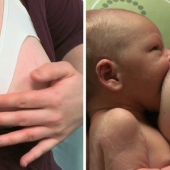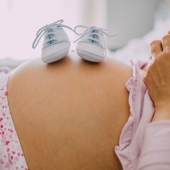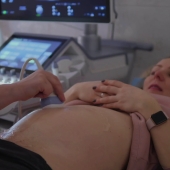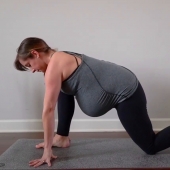Every parent experienced that sinking feeling of fear for their child. Especially when you're a new mom or dad everything suddenly changes and simple objects and things become not as safe as they seemed before. But still childhood should be a wonderful period of any person's life and parents are ready to do anything to make their child smile and laugh.
However, there are some things you may not know about that are not only not that good for your baby but can even be possibly dangerous. so we found six things that do more harm than good to your children. believe us it wouldn't hurt for any parent to know this information. For example did you know that something as simple as a seatbelt may be quite unsafe watch our new video to find out more.
1. Seat belts
• Wearing the lap portion of a seat belt over your belly when you’re pregnant might cause an injury to the baby in case of an accident.
• Place the belt as low as possible under your abdomen. Try to sit upright, as leaning forward will put too much pressure on the baby. Better yet, don’t drive at all unless you must: the steering wheel is far too close to the belly, which might prove fatal even in a minor accident.
2. Electronics and gadgets
• The blue light from LED screens causes retinal damage, which may lead to macular degeneration. This may result in cataracts and blindness.
• When using smartphones and tablets, a child is deprived of the real world. Fine motor and sensory skills are not being developed, and there is no live interaction. This results in the underdevelopment of the frontal lobe that is responsible for speech, personality, communication, and decision making.
• Let your children use their devices for not more than one hour a day. Use tablets and smartphones for brain games for kids over the age of 2. When using gadgets, a child should interact with peers or adults.
3. Warm clothes
• The younger babies are, the worse their thermoregulation is. They are exposed to overheating and supercooling. Overheating leads to neuroticism and may result in heatstroke.
• Too much warm clothing prevents the body from developing defense reactions toward weather changes, which may result in cold-related diseases and low immunity.
• Clothing should be made from natural and breathable materials. A baby feels comfortable when his or her belly and chest are dry and their feet and hands are pink and warm.
4. Bright toys
• At the preschool age, children explore the world around them and get social attitudes through their toys. Unnatural colors, electronic sounds, and many details in toys produce a bad effect on creative thinking development and influence personality formation: aggressive behavior, groundless fears, and teenage depression are possible outcomes.
• Choose toys of natural colors and materials: wood or fabric. A game is more educational than entertainment, so toys should be realistic.
5. Juice and milk
• Pasteurized fruit juice is low in vitamins but rich in sugar that causes dental problems and obesity.
• Pediatricians advise giving fresh juices to children over the age of one year. It is better to replace pasteurized juices with fresh fruit.
• Whole cow’s milk is low in iron but too high in nutrients and unnecessary for a baby. It may harm the kidneys and provoke anemia, allergies, and dysbacteriosis.
• Cow’s milk can be given to children over the age of one year, but not more than 17oz a day. Replace milk with calcium-rich foods (cultured dairy foods, green vegetables, and fruit) and foods rich in vitamin D (eggs, beef liver).
6. Baby walkers and jumperoos
• Their proven harm is more considerable than their positive effect. Baby walkers and jumperoos are already banned in Canada.
• Baby injury rate (over 8,000 cases a year in the USA alone).
• Uneven muscle strengthening, deformation of feet and legs.
• Spine curvature due to the heavy load on it (a child’s spine does not take shape and lacks necessary curves before the age of one).
• Independent motor skills development is postponed as there is no motivation to walk independently. The sense of equilibrium and the instinct of self-preservation are not evolving.
• To minimize the harm, use these devices under adult supervision for 15 minutes twice a day only after the baby is able to get up independently. Also, consult your orthopedist to discuss precautions.
- 80619 views













